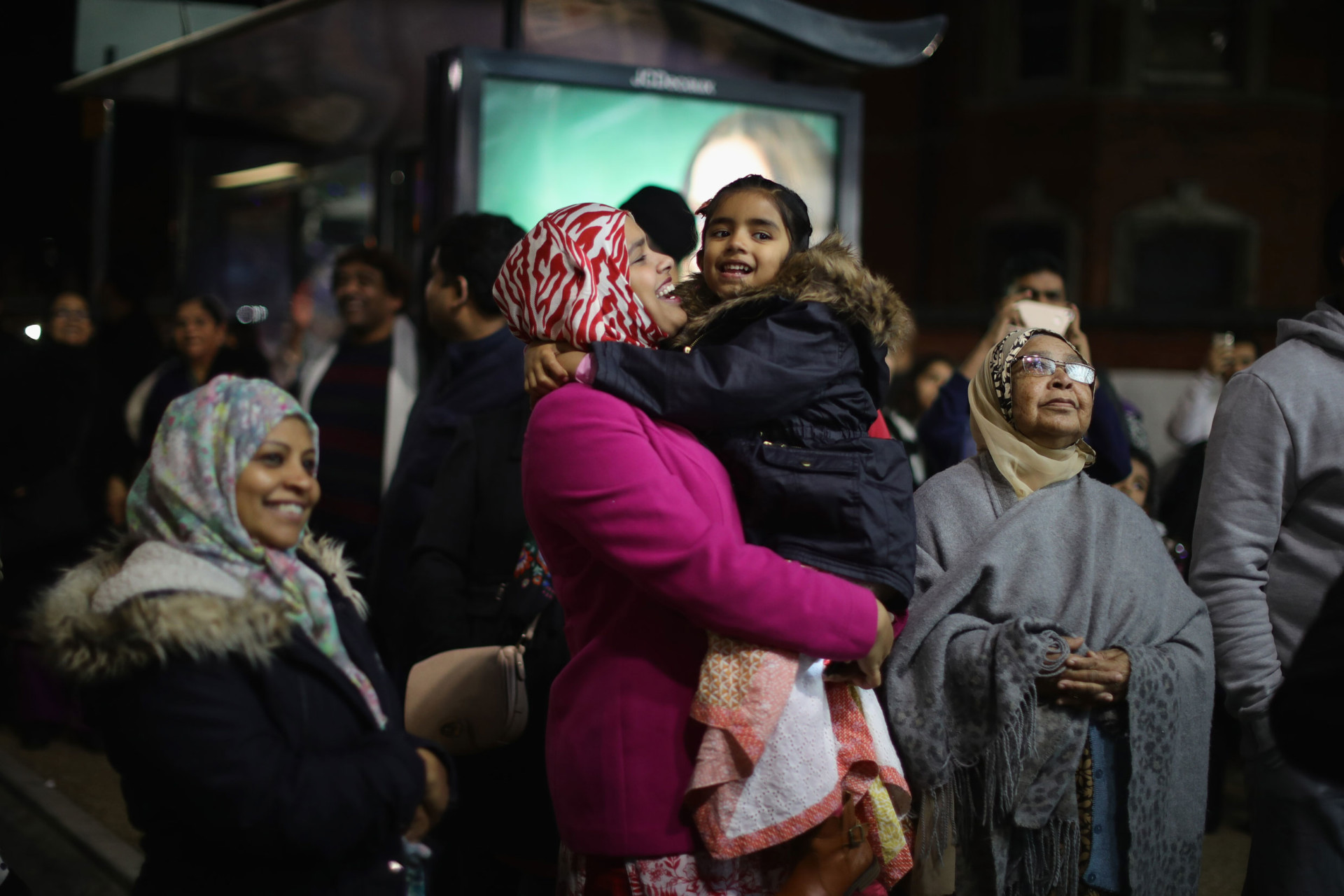Last weekend saw unrest break out in Leicester, England, between groups of Hindus and Muslims of mostly Indian origin. Over a dozen people were arrested, cars were damaged and police were called away from duties related to the Queen’s funeral to deal with the disturbances in the city, located 100 miles northwest of London. Many were shocked by the violence in a place where Hindus and Muslims have lived peacefully, side-by-side, for decades.
The disorder exposes a worrying trend, whereby national politics in India have created fault lines in the diaspora. Hindutva, the divisive political ideology endorsed by Indian Prime Minister Narendra Modi, which advocates for Hindu supremacy – and wants to transform India into an ethno-religious state – has crossed over to Britain.
After Modi’s two electoral victories, in 2014 and 2019, similar scenes unfolded in India.
Videos shared online by Leicester residents show crowds of Hindutva supporters marching through mixed areas. One video depicted hundreds of Hindu men in balaclavas walking past a mosque chanting, “Jai Shri Ram,” which translates from Hindi as “glory to Lord Ram,” a popular slogan, almost like a battle cry, employed by the Hindu right wing during communal violence and protests in India. A Hindu temple in the city was targeted when a man pulled down its flag.
Violence between Hindus and Muslims first flared in Leicester in late August, after the Asia Cup cricket match between India and Pakistan. India condemned the violence “perpetrated against the Indian community in Leicester and vandalization of premises and symbols of Hindu religion,” said its high commission in a statement on Monday.
But blaming cricket for what has happened ignores the tensions that have slowly and quietly simmered for some time below the surface.
Leicester’s Mayor Peter Soulsby blamed social media disinformation for the sharp escalation, telling BBC’s Radio 4, “There’s no obvious local cause for this at all.” In India, fake news on social media is often the cause of similar clashes. In November last year, after mob attacks on four mosques and several Muslim-owned homes and businesses in the northeastern state of Tripura in India, which took place on the sidelines of a Hindu nationalist rally, the police went looking for owners of 100 social media accounts for spreading fake news about targeted Hindu deaths in neighboring Bangladesh.
To understand these events, and the recent violence in Leicester, we must understand the Rashtriya Swayamsevak Sangh (RSS), and why fomenting division between Hindus and Muslims is a pivotal part of its ideology.
The RSS is an organization set up in the early 1920s, modeled on the Italian fascist leader Benito Mussolini’s Black Shirts, which in turn formed some of the inspiration for the Nazi party. Its goal is to create a “pure” India, devoid of the country’s large Muslim and Christian populations, leaving only adherents of the Dharmic religions of Hinduism, Jainism and Sikhism. Its first real “political” success was whipping up violence between Hindus and Muslims that led to the demolition of the Babri mosque in 1992, causing the deaths of at least 2,000 Muslims in the northern Indian state of Uttar Pradesh.
That loss of life merely motivated Hindutva to thrive and grow, both within India and beyond.
Since then, its activities have included protesting outside mosques with loud music during prayers; lynching Christians and Muslims for consuming or selling beef; forcibly converting Christians and Muslims to Hinduism; and propagating the “love jihad” conspiracy theory, which alleges that Muslim men target Hindu women by feigning love or marriage in a bid to convert them.
The veteran activist Amrit Wilson, who has spent years raising awareness about the rise of Hindutva, has noted the growth of the ideology across the global Indian diaspora, with RSS branches from Britain to Kenya. Some of those arrested in Leicester over the weekend had traveled to the city from other parts of the U.K., including Birmingham.
Spurred on in part by the rise of Modi – a lifelong RSS member – the growing fanaticism has emboldened Hindutva activists overseas. Local Muslims, in turn, protested the planned visit of Hindu hardliner Sadhvi Rithambara to several British cities this week, which ended up postponed due to her poor health. Rithambara’s event at a church in New Jersey last week was also canceled after protests from the local Indian community. As founder and chairperson of the Durga Vahini, the women’s wing of Vishwa Hindu Parishad, a Hindu militant organization, she played a pivotal role during the Babri mosque demolition and has often courted controversy over the past three decades due to her calls for a “Hindu Rashtra,” or Hindu nation, and her incitement of violence against Muslim and Christian communities in India.
Leicester in particular is not only home to one of Britain’s largest Indian communities – it also contains a sizable Gujarati population, including Muslims, Jains and Hindus. Leicester is also home to the East African Asian population expelled in the early 1970s by the former Ugandan leader Idi Amin, the majority of whom are also of Gujarati origin.
Modi was the Chief Minister of Gujarat when one of the deadliest riots took place in 2002, leading to the deaths of 790 Muslims and 254 Hindus, according to official figures. In consequence, Modi was banned from several countries, including the United States and Great Britain.
In spite of this, and the 20 years that have since elapsed, the events in Leicester demonstrate how far Hindutva has come and how close to home it now is.
The Islamophobic sentiments on Leicester’s streets, fuelled by more than 20 years of “War on Terror” discourse, have exposed a violent side of a community usually projected as the model minority. The question of Hindu-Muslim relations will not be understood through the “multicultural” lens or any other political schemes launched by the British state. It can only be understood by connecting it to the wider, transnational network of Hindutva.



